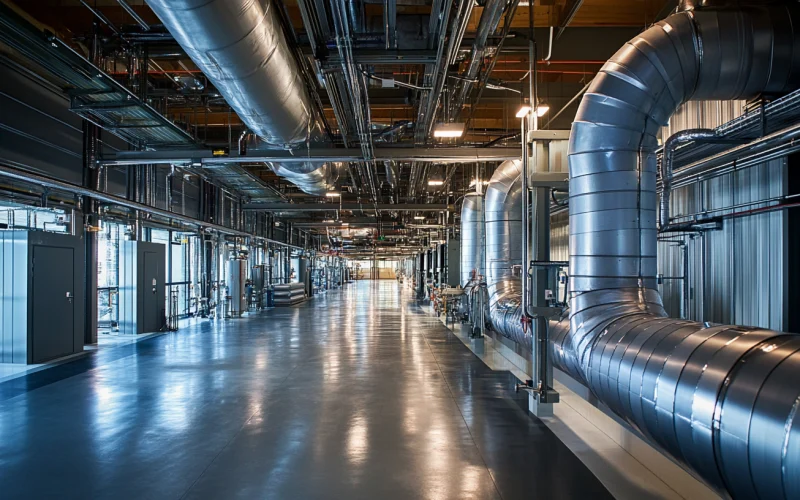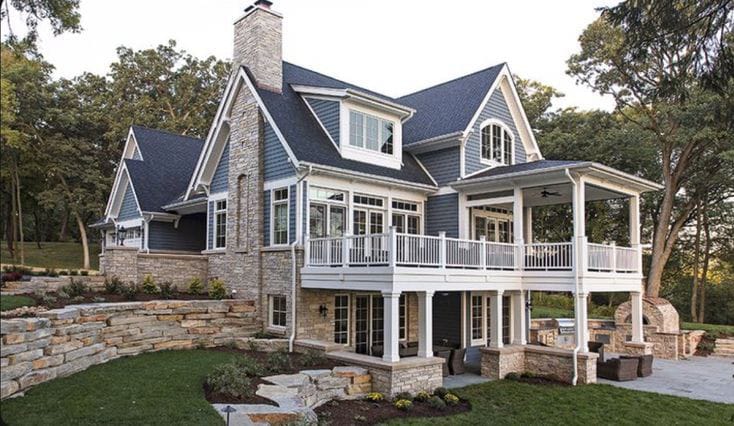The heating, ventilation and air conditioning industry is experiencing a period of change almost without precedent in its long history.
Driven by exciting new technologies and a broader evolution in thinking around system design and impact, this “megatrend” has drawn the attention of experts like Karim Allana, a licensed engineer whose 225-person firm provides a wide range of building construction and remediation services.
“Building owners and HVAC professionals are more focused than ever on energy efficiency, sustainability, and automation,” Allana says.
“Recent technological and process advances have created new opportunities to improve HVAC system performance and indoor comfort while reducing operating costs.”
Here are seven trends Allana and other experts believe will set the tone for the HVAC industry in the near future — if they aren’t already.
Increased Attention to Building Envelope Efficiency
Building envelope improvement is often called the “low-hanging fruit” of building efficiency and decarbonization because it’s relatively easy and cost-effective in both new and existing buildings.
Federal initiatives like the Building Envelope Campaign reward building owners and others who take steps to improve their buildings’ efficiencies by 20% to 50%, and state and federal tax breaks and utility rebates offer additional financial incentives, but envelope improvements would be popular even without government support. Some projects pay for themselves in as little as two years, according to the EPA.
Building envelope improvements technically aren’t HVAC improvements, but they do indirectly improve HVAC system performance and efficiency, reducing operating costs. That’s why they often take priority over more capital-intensive projects.
Ongoing Transition Toward Lower-GWP Coolants
The HVAC industry faces a major and somewhat controversial milestone in 2025 as the EPA’s new requirements for low global warming potential (GWP) refrigerants phase in.
Most laypeople — and even many HVAC professionals — are unaware of the incredibly high GWPs of some legacy refrigerants. When these leak, often during disposal, their warming potential can be thousands of times greater than carbon dioxide, the main driver of climate change.
But while the EPA’s new rules are a good thing for the planet, they’re confusing and potentially costly for the HVAC industry and building operators. In the coming years, countless legacy systems will be swapped out for more efficient, planet-friendly alternatives, creating opportunities and challenges across the industry.
Wider Adoption of Smart Building / Building Automation Systems
Like envelope improvements, smart building and building automation systems can meaningfully improve HVAC system performance quickly and cost-effectively.
However, many building owners remain unaware of the potential savings or skeptical about what they perceive as a loss of manual control over system operation. HVAC pros will need to work to educate their clients while gaining more familiarity themselves with these emerging technologies.
Increased Electrification of Commercial HVAC Equipment
Much of the United States’ commercial-scale heating and cooling equipment runs on natural gas or heating oil, especially in larger buildings. However, this is slowly changing as electric boiler and chiller technology improves and mandates like New York City’s Local Law 97 come into effect.
“The guiding principle of (Local Law 97) has been finding a way to effect the largest possible reduction in carbon emissions from these covered buildings,” says NYC Buildings Commissioner Jimmy Oddo.
“Through a combination of sticks and carrots, our rules create a carefully balanced approach which incentivizes owners to do the work required under the law.”
With penalties already in effect for noncompliant buildings, New York has been on the vanguard of building electrification, but other cities are already following in its footsteps.
Renewed Interest in District Heating and Cooling Systems
One pathway to more sustainable buildings, particularly in densely built cities, is district heating and cooling. These systems, which have been in use for over a century, supply heat and sometimes cooling through water and/or steam pipes that meet at a central facility. Individual buildings on the network may not even need boilers or air conditioning systems of their own.
Many cities in the U.S. and Europe have extensive district heating and cooling networks already, and interest is growing in a new generation of systems that use electricity instead of fossil fuel combustion.
Economies-of-Scale Improvements for Commercial and Institutional Ground-Source Heat Pump Systems
Improvements in technology and economies of scale have made ground-source heat pumps more cost-effective in both district systems and systems serving individual buildings and campuses.
That’s why forward-thinking HVAC professionals increasingly see ground-source heat pumps, which use electricity to transfer heat to or from the ground with far more efficiency than burning fossil fuels or using air as a heat transfer medium, as the key to improving efficiency (and sustainability) across the commercial real estate sector.
Movement Toward Wider Adoption of Residential Air-Source Heat Pumps and Hybrid Heating Systems (Despite Lingering Challenges)
Although air-source heat pumps are not as efficient as ground-source heat pumps in colder climates, they are more efficient and sustainable than fossil-fuel heating in most regions.
Additionally, they provide cooling as well as heating, making buildings that previously did not have air conditioning more comfortable during the summer.
For these reasons, air-source heat pumps are gaining favor with residential HVAC professionals and customers alike. And with equipment manufacturers continuing to work on improving cold-climate heat pump technology, they may soon become the default climate control option just about everywhere.
Exciting Times Ahead?
Like many industries in the broader construction and building management sectors, the heating, ventilation and air conditioning industry is undergoing intense change.
This sets up unique challenges for incumbent operators as well as rare opportunities for disruptors to make their mark on the field.
How this all shakes out is anyone’s guess. For HVAC professionals, it makes sense to think about the current period as more of a “new normal” than an interlude between two relatively static eras.
Improvements in artificial intelligence and potential breakthroughs in heating and cooling technology promise further changes in the near future, and perhaps more significant ones at that. In short, exciting times are ahead for the HVAC industry.











